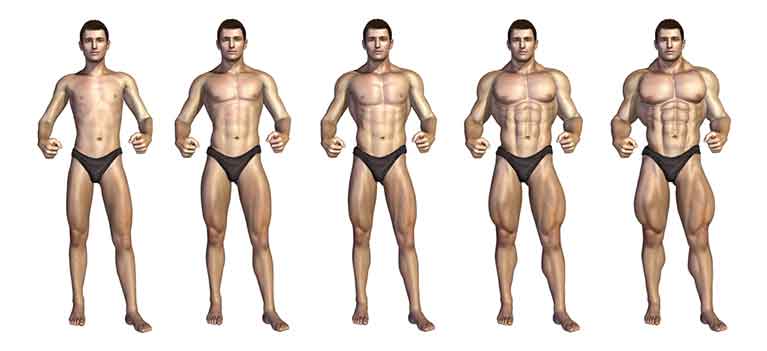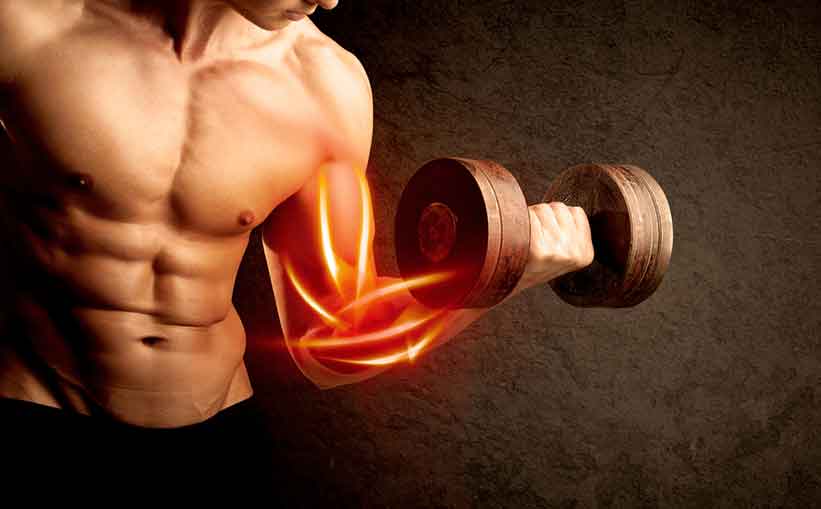
Training specifically for muscle size. When you look at the world’s greatest bodybuilders, you would be forgiven for thinking they are also the world’s strongest men.
They do after all have the largest muscles of anybody. The idea that someone who weighs a hundred pounds less than Mr. Olympia can out-lift him, and out-lift him by a good margin, is surely counter-intuitive.
Of course, powerlifters, strongmen and pure weightlifters are the strongest people on the planet, despite their muscle measurements not stacking up to those of a professional bodybuilder.
So, what gives?
The theory that you can train differently, and specifically, for sheer size or likewise for raw strength, is long established.
There are a lot of intricacies to this, and it’s not even a subject the scientific, nor athletic, community has a complete understanding of yet.
However, it’s obviously possible. And to that end, I will discuss both strength specific training and size specific training throughout this website.
Read the strength primer, and the hypertrophy article to gain some insight into the basics.
For now, let’s talk about getting massive.

Content Table
Training Specifically for Muscle Size – Training Volume
You will hear this again and again: to build bulk muscle mass, you need to train high volume.
“Training Volume” in basic terms refers to the number of reps and sets you are putting in to a muscle/muscle group per week, assuming the weight/load remains relative to effort.
In even simpler terms. 5 sets a week is better than 3 sets, and 10 sets is better than 5, when it comes to increasing muscle hypertrophy (Krieger study and Schoenfeld study)
Of course, there’s a point when overtraining within the session would become a problem but it is also it’s own limiting factor. Sometimes you just don’t have another set in you.
Success here is best measured by results, and finding the “sweet spot” volume wise for you as an individual is part of the fun.
Training Specifically for Muscle Size – Training Frequency
Frequency and volume are tied to one another, but can have independent effects depending on how you design your program.
Training a muscle or muscle group twice or more a week would be considered high-frequency, which by the way is associated with greater muscle growth over time (Schoenfeld and Krieger)
If you do the same routine as you would on a single session per week then you are also doubling your volume.
However, if you halve your intra-session set count because you’re now training twice per week then you are keeping your volume relatively equal.
There isn’t enough evidence to compare different frequencies and equivocal volume with different volumes and equivocal frequency.
If I was pushed I’d say higher frequency wins out because due to triggering anabolic pathways more often.
Training Specifically for Muscle Size – Going Anaerobic
If you’ve read the strength training article then note the discussion about the order of cardio and resistance training.
Cardio saps energy and energy is required to push/pull the heaviest loads possible to elicit the greatest strength gains.
The same doesn’t appear to be true for gains in muscle size. This could have something to do with the theory that sarcoplasmic hypertrophy, which is often the type of muscle fiber growth associated with size, is triggered by anaerobic processes.
What I mean is that working your muscles under load and going deep into anaerobic respiration appears to stimulate post-training muscle hypertrophy, regardless of the load.
Something bodybuilders often do is to focus on the bigger muscles after they have virtually exhausted themselves working on smaller groups. As such they use smaller loads.
They might say something like “the muscles don’t know what weight they are lifting”.
So if size gains are more associated with higher rep sets that go deeply anaerobic, rather than the actual weight, it shouldn’t matter what order cardio and resistance training are done in (Eddens study)
However, when comparing resistance training only sessions with cardio plus resistance training sessions, the RT only wins with respect to size gains (Wilson study)
The last point there suggests cardio exercise has some attenuating effect on anabolic processes, as is also the case for strength specific training.

Slow, Fast or Both?
I really enjoy playing with the speed of my reps, but does it pay to lift fast or slow?
Scientists call this “movement velocity” and they have measurements. A slow movement is between 2 to 3 seconds for the eccentric contraction and the same for the concentric.
A fast movement would be about a second for each of the eccentric and concentric portions.
What’s nice and weird is that quads tend to grow more from slow movement velocities while biceps grow bigger from fast movements (Hackett study)
The studies aren’t plentiful so you can’t go making sweeping statements like that really. However, let’s just do a quick thought experiment based on the above cited meta.
Let’s say quads do grow bigger from slow reps and biceps grow larger from fast reps.
Could it be that the more muscles there are in the main group – quads having four and biceps having two – account for the difference?
Or, perhaps it’s just mass – quads are much bigger than biceps. Perhaps it’s a bit of both.
Whatever it is, it’s worth exploring. Do a few weeks of going slow and compare with a few weeks of going fast.
Personally, I like mixing explosive reps with slow reps, especially for the bigger compound lifts like squats, for the potential that they activate different kinds of muscle fibers – slow-twitch (type I) and fast-twitch (type IIa and IIb).
